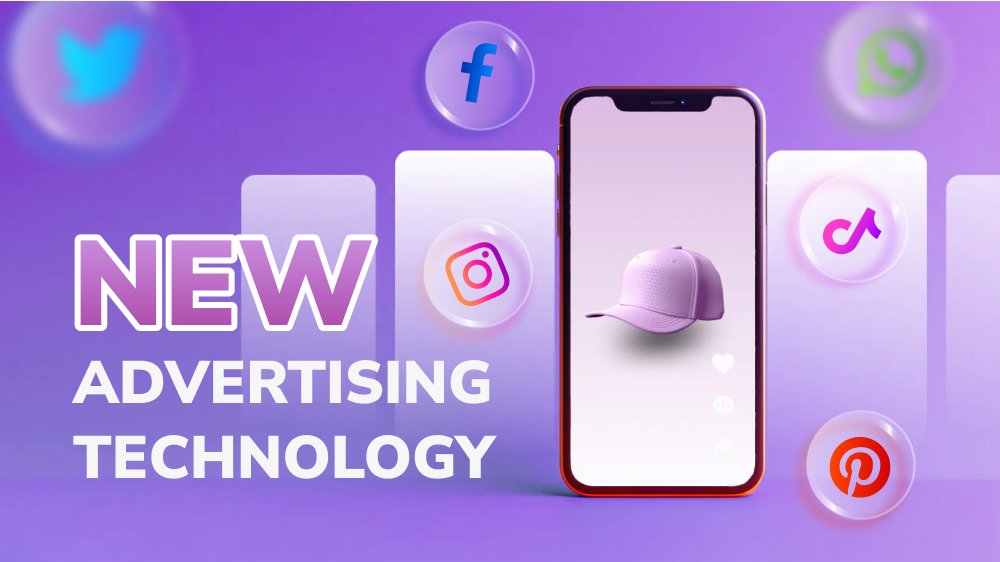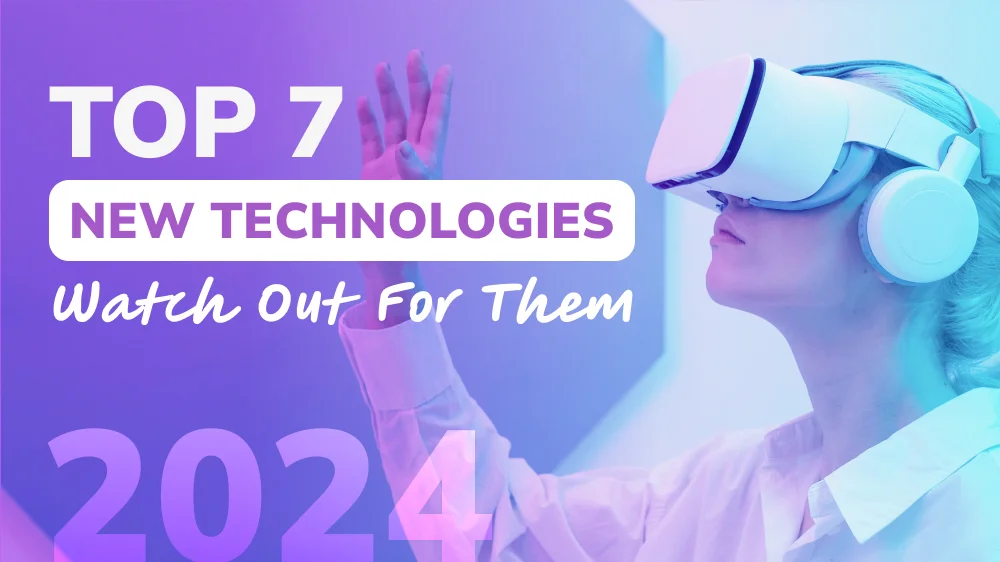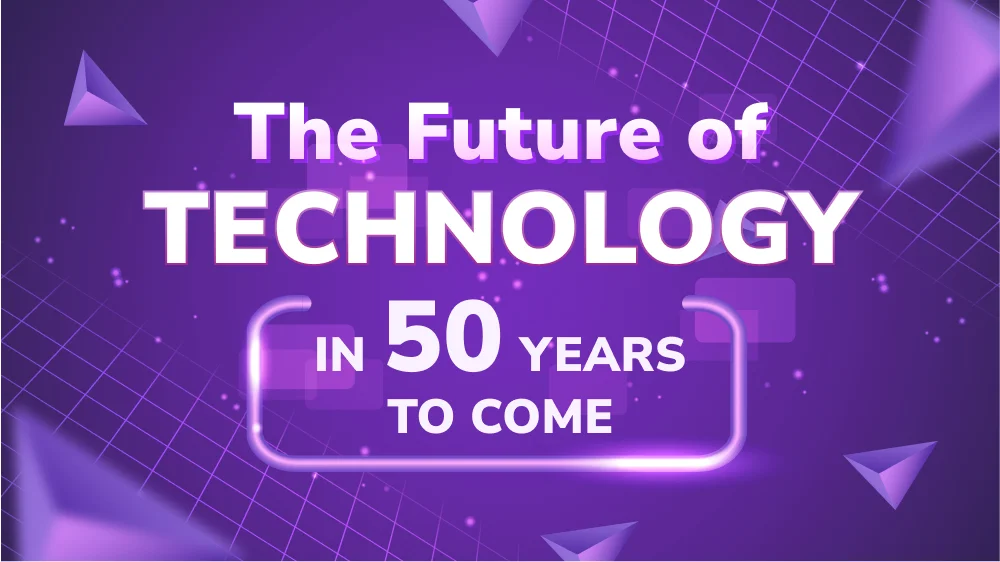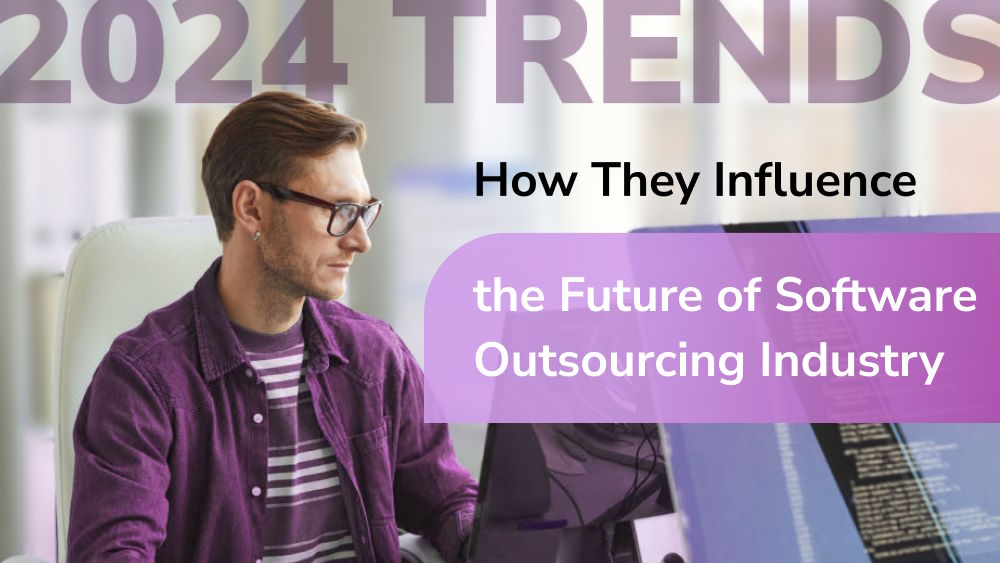2024 Vision: Embracing the Mobile App Development Trend Ahead
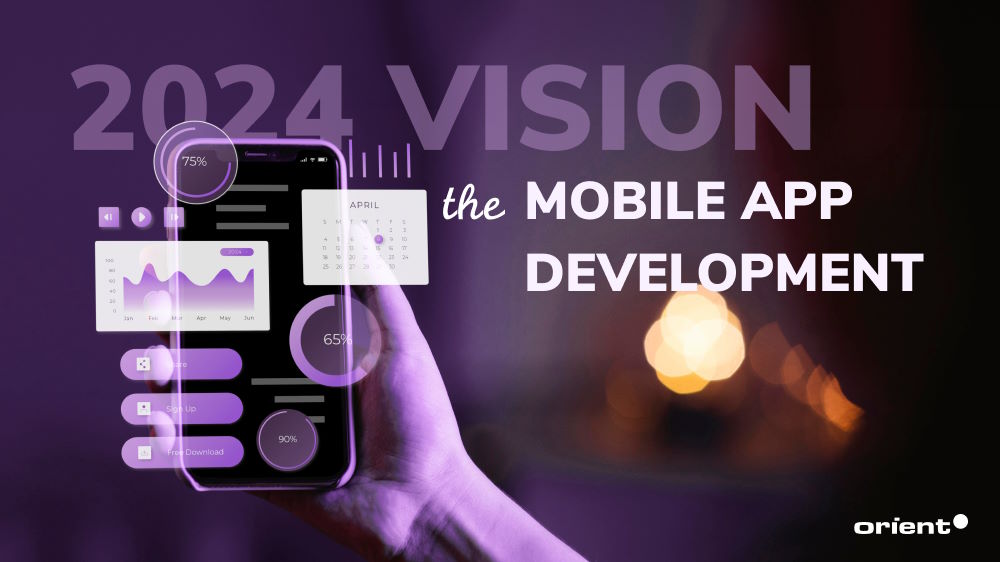
Content Map
More chaptersWe spend a lot of time on our smart devices. Statista has reported that as of April 2022, the average daily phone usage time - not including call time - has climbed over 4 hours and 30 minutes. By 2024, it’s predicted that this number will be approximately 4 hours and 39 minutes. That’s nearly 20% of a day.
With that much time spent on mobile phones, it only makes sense that businesses are constantly on the mission to develop the most appealing mobile apps. What makes a great mobile app, then? Is it the great UI/UX design, intuitive user interface, or the high performance? It might be one or all of them. In today’s article, however, we would like to discuss mobile app development trends. Embracing the latest mobile app industry trends is one way to help a business stay relevant and competitive. How have the mobile app trends evolved since 2023? This article will help you discover the top 10 mobile app development trends.
Why Should You Be Aware of The Latest Mobile App Development Trends?
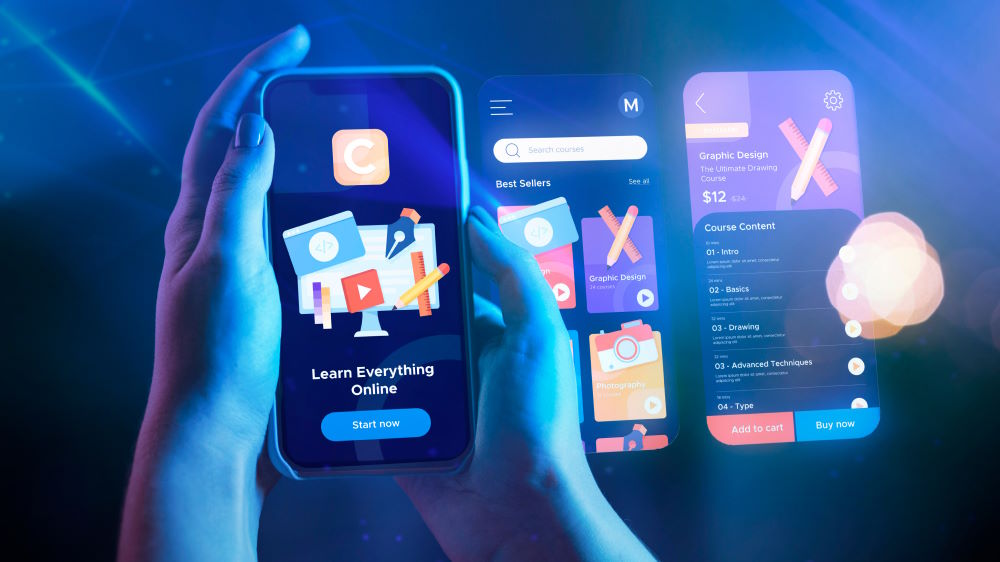
The mobile app development industry is ever-evolving and changing. Admittedly, as technology is developing in leaps and bounds, it can be overwhelming trying to keep track of the newest technologies constantly.
However, trends are what help you prepare for the future. To come up with the best future-fit solutions, an organization needs to pinpoint where or in which industry they are competing, how to win, and what to do to win. The market presents its players with opportunities, trends, and threats that revolve around consumer expectations, as well as new technology developments.
Trends act as demand drivers and signals of change. It also acts as a market pull that nudges organizations to prepare their position, product, people, and purpose to be future-ready.
All in all, keeping track of the latest market drivers allows businesses to stay relevant and competitive by establishing a strong foundation for future-fit adjustments.
Top 10 Mobile App Development Trends in 2024
Below is a list of the latest mobile app development trends in terms of technology and their prominent attributes.
AI-Driven Personalization

Noteworthy Data
- Accenture reports that 95% of executives think their company will be forced to update its IT architecture due to generative AI.
- A study by Salesforce shows that better personalization is what 73% of customers anticipate as technology develops.
Arguably, Artificial Intelligence (AI) has been one of the biggest technologies in recent years. Almost every business has been looking to hop on this trend after the wild success of ChatGPT. Think of Google’s Gemini or ChatSpot.AI by HubSpot. If you and your team of mobile app developers want to utilize AI but are unsure how to do so, using it for an ultra-personalized customer experience is one effective way. This personalization may refer to areas like content, interface design, or recommendations tailored to an individual’s specific behaviors and preferences.
For example, Starbucks has utilized “Deep Brew”, its AI tool, to offer targeted offers and attract more occasional customers. The brand has experienced repeat visits and increased loyalty, partly thanks to the contribution of Deep Brew data analytics capabilities and partnerships with partners like Bank of America and Delta Air Line’s SkyMiles program.
Foldable and Flexible Displays
Noteworthy Data
- When it comes to their next purchase, 64% of Chinese consumers of high-end smartphones said they would be willing to get a foldable phone.
- The market for foldable smartphones is projected to be worth $28.72 billion in 2024 and $63.31 billion by 2029, with a CAGR of 17.13% from 2024 to 2029.
Foldable devices are becoming increasingly popular as data has shown that app users are interested in enjoying both a larger and compact screen all in one device. Developers will be overlooking a potential group of users if their mobile apps fail to optimize for foldable devices. For example, whether users use the app folded or unfolded, the experience on the app should be seamless. This also means that the app the mobile application development takes into consideration how the app would look on mobile devices when folded and unfolded.
On-Demand Apps
Noteworthy Data
- By 2025, the on-demand economy is projected to be worth $335 billion.
- Around 86.5 million Americans (42% of the adult population) have used an on-demand service.
An on-demand app is an online or mobile application that lets customers compare offers from several suppliers and receive, schedule, or purchase services or goods from a particular business. By enabling users to interact with service providers that do not have corporate assets, Uber transformed the delivery of services and paved the way for apps like Zomato and Airbnb.
This interest in dedicated apps is projected to remain strong. Whether it is cleaning services, pet care, specific workout program apps, medicine delivery apps, or on-demand doctor apps, on-demand mobile apps have made connecting to experts easy.
Voice Recognition
Noteworthy Data
- With a CAGR of 23.7 percent, the size of the global voice recognition industry is predicted to rise significantly over the next ten years, from a meager $10 billion in 2020 and 2021 to approximately $50 billion in 2029.
- Fifty percent of all searches in 2021 were voice-based.
Siri, Alexa, and Google Assistant are well-known virtual assistants in the mobile app market. The hands-free experience provided by voice recognition features, which utilize natural language processing (NLP) AI tools, is giving apps a competitive edge. Custom voice commands, voice-activated controls, speech-to-text, and text-to-speech provide users with an enhanced personalized experience.
Augmented Reality (AR) and Virtual Reality (VR) Experiences
Noteworthy Data
- Retailers are implementing AR in the purchasing process gradually, according to a report published in Mobile Marketer. Virtual reality (VR) and augmented reality (AR) are only being used by 1% of merchants in their customer buying processes.
- Following the introduction of ARKit by Apple and ARCore by Google, a multitude of AR applications are now in daily use, totaling a billion users per day.
AR and VR have been making waves in the mobile app development market for some time, and they’re not showing any signs of stopping when it comes to bringing innovations to the table. No longer confined to the game industry, augmented and virtual reality apps are setting new standards for an immersive and interactive user experience.
AR and VR app development is sweeping across industries like education, tourism, and e-commerce. Take virtual classrooms as an example. Students can visually observe the historical artifacts during history classes. Another popular feature is virtual try-on features in mobile commerce apps.
Cloud Computing Integration
Noteworthy Data
- A report found that 39% of respondents currently work more than half their workloads in the cloud, and 58% say they will do so within the next 12 to 18 months.
Cloud computing isn’t a new technology, but it hasn’t been utilized in mobile app development. Cloud computing has the potential to enhance and boost the development experience by providing:
- Data centralization
- Leveraging of cloud power for data storage and processing
- A wide options of operation systems and data storage, etc. Instead of storing and processing data on the user’s device, everything will be carried out via the cloud.
Stronger development process resulting in better-performance apps that meet customers’ and market’s expectations.
M-Commerce
Noteworthy Data
- 76% of Americans, or three out of every four, have made an internet transaction using a smartphone. 92% of internet shoppers are under 50. (Consumer Affairs)
Visiting virtual shops and purchasing whatever you need has become the norm. Online shopping is such an integrated part of our lives that we often browse online platforms first when we want to buy specific goods. The popularity of mobile commerce has popularized mobile payments like Google Pay or Apple Pay.
In 2024, e-commerce app development is going to see significant shifts, including the rise in AI-powered personalized experiences, in-app purchases, and progressive web apps.
Cross-Platform Mobile Development
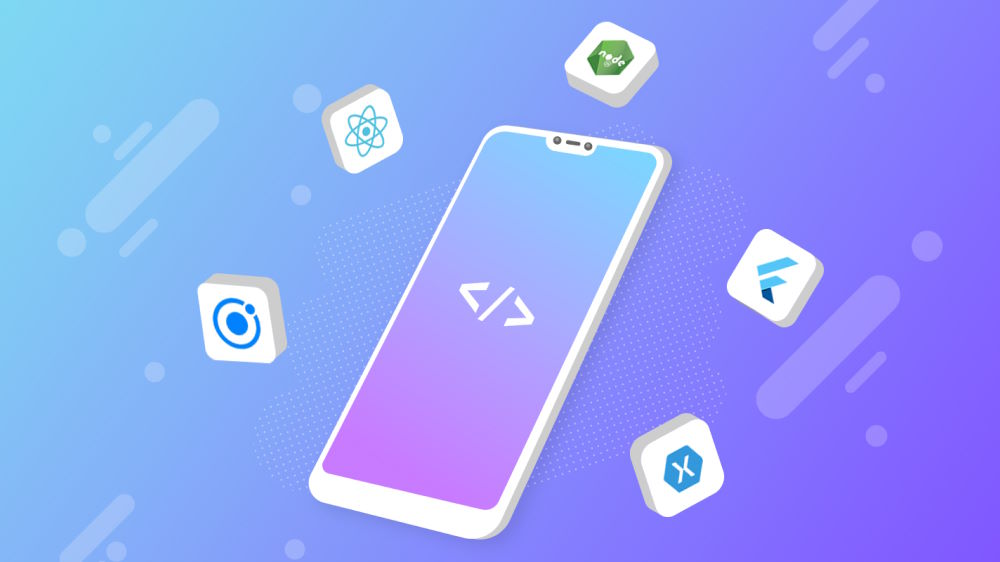
Noteworthy Data
- Cross-platform technologies or frameworks are generally used by one-third of mobile developers; native tools are used by the remaining developers.
With an eye on streamlining development and reducing expenses, hybrid applications combine the best features of web apps - responsive design and embedded browser control. Still, cross-platform programming frameworks such as Flutter have become more popular due to their various functionalities and improved user experience. Google Ads and Alibaba are two popular apps using Flutter.
Cross-platform mobile app development is a solution to the resource-intensive nature of native apps. Since apps can run on any device with the same user interface and experience, businesses have a wider target audience (i.e., no longer limited to Android users or iOS users alone), and maintenance is also a lot easier.
The Rise of Super Apps
Noteworthy Data
- The size of the worldwide super apps market was estimated at $58.6 billion in 2022 and is expected to increase to $722.4 billion by 2032, with a CAGR of 28.9% from 2023 to 2032.
Super apps are mobile apps that provide users with a broader range of services and functionalities on a single platform. Users wouldn’t need to switch back and forth constantly on multiple apps to access certain services.
Imagine a single application that allows you to book a plane ticket or a hotel, interact with other users, make service payments, and even book a taxi! Not only do super apps optimize user’s mobile storage, but they also give businesses access to a wider audience. AI technology helps users with a personalized super app experience.
Focus on Privacy and Security
Noteworthy Data
- 83% of breaches involved external actors, and nearly all attacks had financial motivations, according to the 2023 Verizon Data Breach Investigations Report (DBIR). In 49% of these external actor breaches, stolen credentials were used.
Mobile app security has always been a hot-debated topic. Despite yearly reports of data breaches, most organizations idly stand by instead of taking action to protect their users. 2024 is predicted to face cybersecurity risks like:
- AI-powered malware using machine learning algorithms exploiting the weak links in mobile security systems.
- Phishing scams targeting mobile apps have been on the rise. Attackers are using fake notifications and messages with the help of AI to trick users into revealing sensitive information.
- In-app purchases and financial transactions are exploited to steal sensitive data.
Hence, 2024 will see a consolidation of security tools to bring a more holistic approach to security. While many organizations are using dozens of cybersecurity tools at once - which is hard to manage, it is likely that firms will focus on more comprehensive tools to mitigate security incidents efficiently.
The Future of Mobile App Development
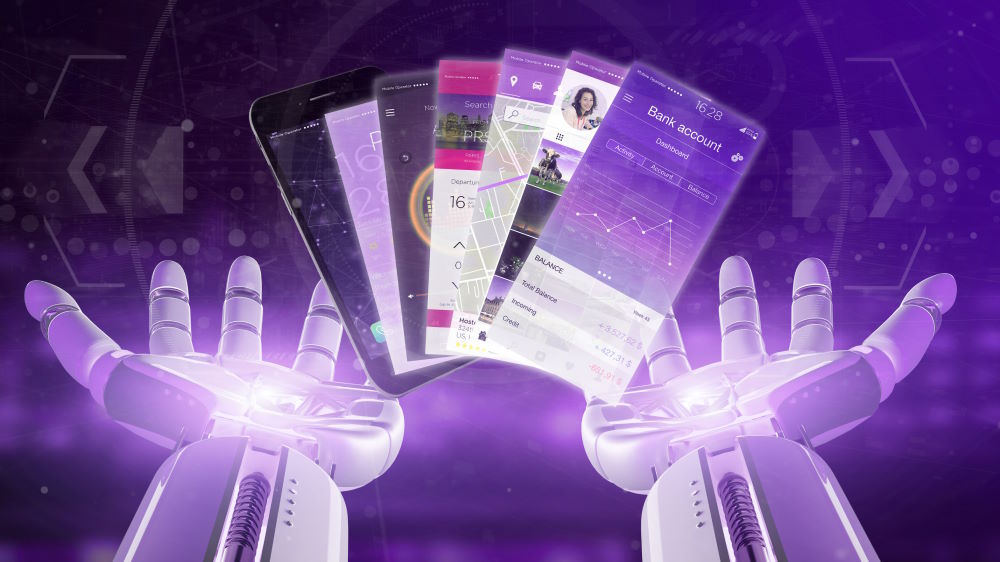
Just like every other technology, mobile apps are ever-evolving. Trends are market pushers and signals to a business to make adjustments and prepare solutions to be future-ready. It is best to approach trends open-mindedly and embrace changes in the industry.
Orient Software has over a decade of experience in navigating changes in the mobile app development world. If you are looking for expert advice on the matter or other issues relating to software development, don’t hesitate to reach out to us! We are happy to answer your questions and assist you in your app development journey.


